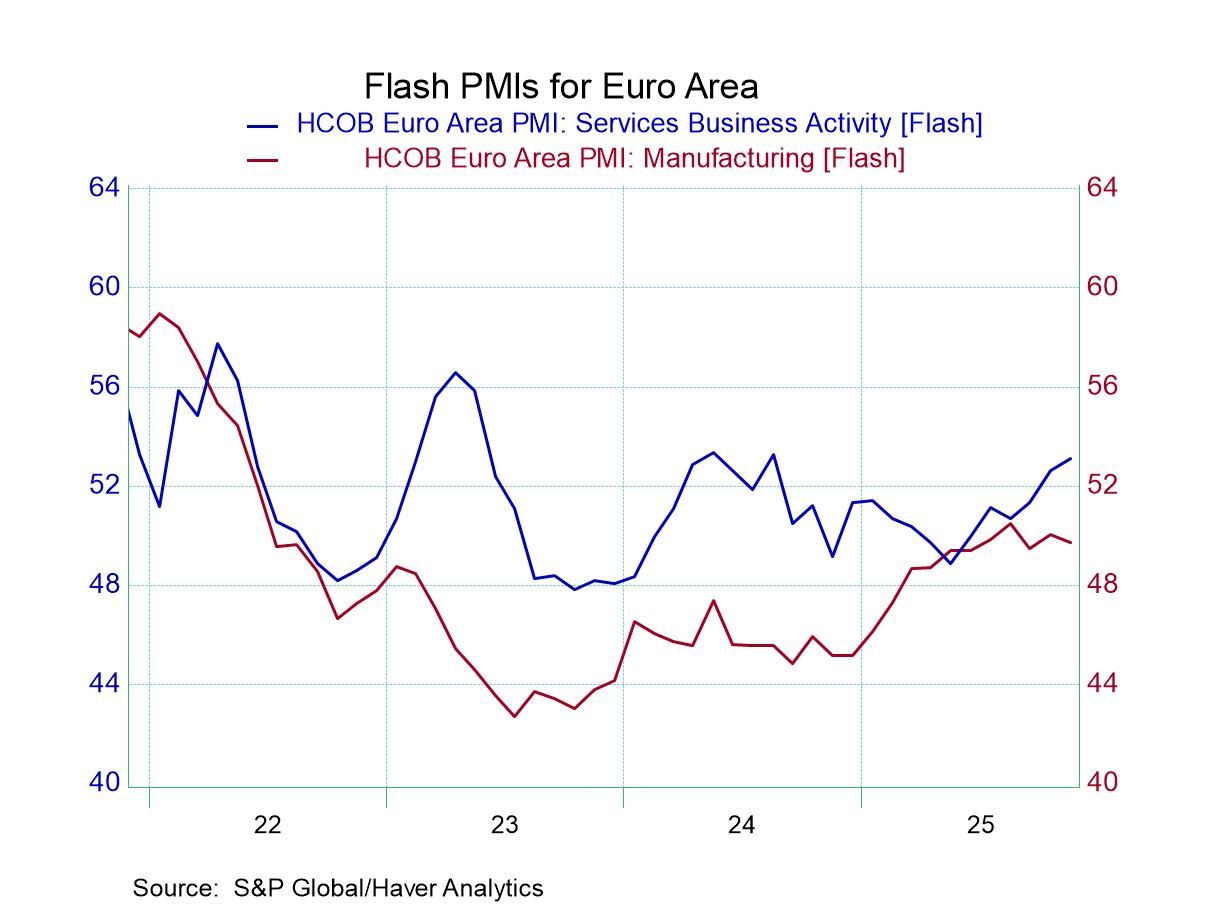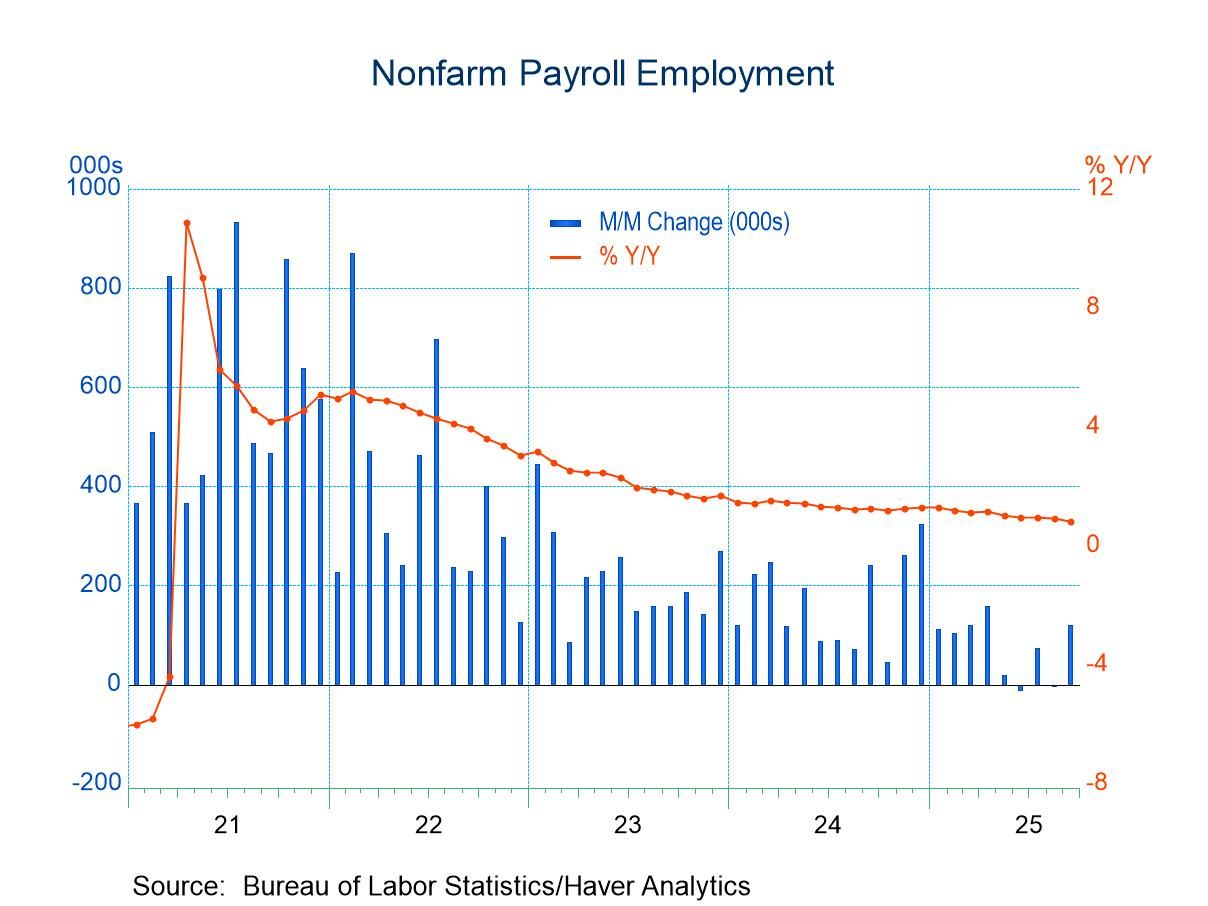 Global| Jan 31 2007
Global| Jan 31 2007U.S. Construction Spending Off Again
by:Tom Moeller
|in:Economy in Brief
Summary
The value of construction put in place in December fell 0.4% after an upwardly revised 0.1% November uptick. Consensus expectations had been for no change. For the full year, construction spending grew 4.8%, the weakest since 2002 [...]

The value of construction put in place in December fell 0.4% after an upwardly revised 0.1% November uptick. Consensus expectations had been for no change.
For the full year, construction spending grew 4.8%, the weakest since 2002 after 2005's 10.7% surge.
Residential building continued it's recent rate of decline, despite warmer temperatures, and fell 1.6%. New single family building dropped 2.2% after a 3.o% slide during November and it lowered activity 22.2% below the peak this past February. Spending on improvements also slipped 0.2% (+7.8% y/y).
During the last twenty years there has been an 84% correlation between the q/q change in the value of residential building and its contribution to growth in real GDP.
Nonresidential building rose 0.9% after an unrevised 1.4% November jump. Office construction surged 1.4% (22.1% y/y) and multi-retail building soared 4.1% (21.4% y/y).
Public construction spending rose 0.6%. Spending on highways & streets, nearly one third of the value of public construction spending, fell 1.1% (+9.6% y/y).
These more detailed categories represent the Census Bureau’s reclassification of construction activity into end-use groups. Finer detail is available for many of the categories; for instance, commercial construction is shown for Automotive sales and parking facilities, drugstores, building supply stores, and both commercial warehouses and mini-storage facilities. Note that start dates vary for some seasonally adjusted line items in 2000 and 2002 and that constant-dollar data are no longer computed.
| Construction Put-in-place | December | November | Y/Y | 2006 | 2005 | 2004 |
|---|---|---|---|---|---|---|
| Total | -0.4% | 0.1% | -1.4% | 4.8% | 10.7% | 11.5% |
| Private | -0.8% | -0.5% | -4.6% | -4.6% | 12.0% | 14.3% |
| Residential | -1.6% | -1.4% | -12.5% | -1.7% | 13.9% | 18.6% |
| Nonresidential | 0.9% | 1.4% | 14.5% | 16.2% | 7.4% | 5.3% |
| Public | 0.6% | 2.2% | 10.5% | 10.2% | 6.2% | 2.8% |
Tom Moeller
AuthorMore in Author Profile »Prior to joining Haver Analytics in 2000, Mr. Moeller worked as the Economist at Chancellor Capital Management from 1985 to 1999. There, he developed comprehensive economic forecasts and interpreted economic data for equity and fixed income portfolio managers. Also at Chancellor, Mr. Moeller worked as an equity analyst and was responsible for researching and rating companies in the economically sensitive automobile and housing industries for investment in Chancellor’s equity portfolio. Prior to joining Chancellor, Mr. Moeller was an Economist at Citibank from 1979 to 1984. He also analyzed pricing behavior in the metals industry for the Council on Wage and Price Stability in Washington, D.C. In 1999, Mr. Moeller received the award for most accurate forecast from the Forecasters' Club of New York. From 1990 to 1992 he was President of the New York Association for Business Economists. Mr. Moeller earned an M.B.A. in Finance from Fordham University, where he graduated in 1987. He holds a Bachelor of Arts in Economics from George Washington University.






